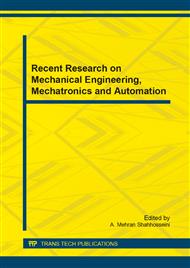p.41
p.48
p.53
p.58
p.62
p.68
p.73
p.79
p.85
A Finite Volume Model for the Simulation of Currents in Closure Gap
Abstract:
A mathematical model to study currents in closure gap of a large coastal reclamation project was developed and solved by finite volume method basing on the strict quantity conservation characters. The unstructured triangular meshes were used to meet the complex boundaries and the local mesh refinement approach was adopted near the closure gap area so as to guarantee the requirements of veracity and computational precision. The flow field distribution and the maximum flow velocity were analyzed under different closure gap width in the tidal currents and the appropriate closure gap width was determined. It was indicated that combining the closure gap and overflow was necessary for the closure construction in offshore dyke engineering. The scheme from the simulation had been successfully applied in closure gap construction. The approach could be applied for power flow analysis to determinate the scheme for closure construction of larger areas in the reclamation project.
Info:
Periodical:
Pages:
62-67
Citation:
Online since:
July 2014
Authors:
Price:
Сopyright:
© 2014 Trans Tech Publications Ltd. All Rights Reserved
Share:
Citation:


